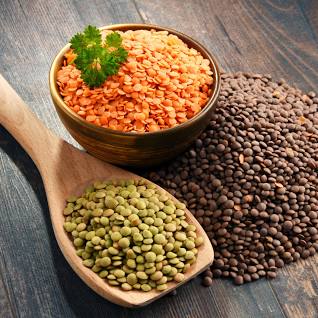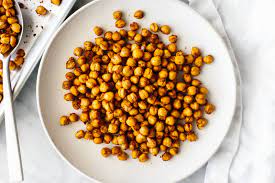Pulses are an important source of protein, fibre, and essential vitamins and minerals.
They are also relatively easy to grow and require fewer inputs than other crops, making them an important staple food for many communities around the world.
In many countries, pulses are an important source of income for farmers, helping to support local economies and reduce poverty.
The earliest evidence of pulse cultivation has been found in the Middle East, where lentils and chickpeas have been grown for thousands of years. From there, pulses spread to other parts of the world, including Africa, Europe, and Asia, where they became a staple food for many communities.
Although they are used interchangeably by some people, Pulses are relatively different from legumes. A legume refers to any plant from the Fabaceae family that includes its leaves, stems, and pods meanwhile, a pulse is an edible seed from a legume plant. They are edible seeds of pod-bearing plants.
For clarity purpose, a pea pod is a legume, but the pea inside the pod is the pulse. The entire legume plant is often used in agricultural applications (as cover crops or in livestock feed or fertilizers), while the seeds or pulses are what typically end up on our dinner plates. Beans in their various forms (kidney, black, pinto, navy, chickpeas, etc.) are just one type of pulse. The most popular and widely-consumed types of pulses are dried beans, dried peas, and lentils. Other types of pulses include lupins and chickpeas.
India is the world’s largest producer of pulses making up 25% of global production.
United Nations Recognition of Pulses
In honour of the significance of these nutrient-packed food crops (Pulses), the United Nations General Assembly (UNGA) set aside February 10 annually as World Pulses Day (WPD) . This is attributed to the success of the International Year of Pulses (IYP) in 2016, which was implemented by the Food and Agriculture Organization (FAO).
This move was made in recognition of the pivotal role that pulses can play in achieving the 2030 Agenda for Sustainable Development.
World Pulses Day offers a unique chance to raise awareness about pulses and the importance they hold in transforming agrifood systems towards greater efficiency, inclusiveness, resilience, and sustainability. These improvements lead to better production, improved nutrition, a healthier environment, and an overall better quality of life, ensuring that no one is left behind.
Cultural Significance of Pulses In Different Parts of the world
In ancient times, pulse-based dishes were often served to royalty and other high-status individuals, reflecting their importance and cultural significance.
In many cultures, pulse-based dishes are also an important part of traditional celebrations and festivals. For example, in India, lentil dishes such as dal are a staple food during Diwali, the festival of lights.
In the Middle East, falafel, made from chickpeas, is a popular street food that is often enjoyed during Ramadan. In Africa, bean dishes such as moimoi and groundnut stew are enjoyed during special occasions and family gatherings.
In Nigeria, beans are used in making local foods such as ‘moin-moin’, ‘akara’, ‘ekuru’ ‘gbegiri’. pulse cultivation and consumption have a rich and important history around the world, playing a significant role in traditional cultures, festivals, and celebrations.
Pulses are also an important source of nutrition and a key ingredient in many traditional recipes, making them an important part of our global food heritage.
Different Pulse Crops and their Nutritional Benefits
In addition to their cultural significance, pulses also have many nutritional benefits. They are high in protein, fibre, and essential vitamins and minerals, making them an important source of nutrition for many communities around the world.
Here are some of the most popular pulse crops and the nutritional benefits they offer:
- Lentils
 Lentils are a small, round pulse crop that is a good source of protein, fibre, and iron. They are also rich in folate, a B vitamin that is important for cell growth and function. Lentils can be used in soups, stews, and salads, or mashed into dips like hummus.
Lentils are a small, round pulse crop that is a good source of protein, fibre, and iron. They are also rich in folate, a B vitamin that is important for cell growth and function. Lentils can be used in soups, stews, and salads, or mashed into dips like hummus.
2. Chickpeas Chickpeas, also known as garbanzo beans, are a round, nutty-tasting pulse crop that is high in protein, fibre, and iron. They are also a good source of magnesium, which helps regulate blood sugar and blood pressure, and potassium, which helps regulate heart function and fluid balance. Chickpeas are commonly used in dishes like falafel, hummus, and salads.
Chickpeas, also known as garbanzo beans, are a round, nutty-tasting pulse crop that is high in protein, fibre, and iron. They are also a good source of magnesium, which helps regulate blood sugar and blood pressure, and potassium, which helps regulate heart function and fluid balance. Chickpeas are commonly used in dishes like falafel, hummus, and salads.
3. Peas Peas are a sweet, tender pulse crop that is high in protein, fibre, and vitamin C. They are also a good source of vitamin K, which helps regulate blood clotting, and vitamin B1, which helps the body convert food into energy. Peas can be used in soups, stews, and curries, or blended into dips and spreads.
Peas are a sweet, tender pulse crop that is high in protein, fibre, and vitamin C. They are also a good source of vitamin K, which helps regulate blood clotting, and vitamin B1, which helps the body convert food into energy. Peas can be used in soups, stews, and curries, or blended into dips and spreads.
4. Beans Beans, such as black beans, kidney beans, and navy beans, are versatile pulse crop that is high in protein, fibre, and iron. They are also a good source of magnesium and potassium. Beans can be used in soups, stews, and salads, or mashed into dips like refried beans.
Beans, such as black beans, kidney beans, and navy beans, are versatile pulse crop that is high in protein, fibre, and iron. They are also a good source of magnesium and potassium. Beans can be used in soups, stews, and salads, or mashed into dips like refried beans.
5. Peanuts Peanuts are not technically a pulse crop, but they are often included in the same category due to their similar nutritional profile. Peanuts are high in protein, fibre, and healthy fats, and are also a good source of vitamin E, which helps protect the body against oxidative damage. Peanuts can be used in a variety of dishes, including spreads like peanut butter, sauces, and desserts.
Peanuts are not technically a pulse crop, but they are often included in the same category due to their similar nutritional profile. Peanuts are high in protein, fibre, and healthy fats, and are also a good source of vitamin E, which helps protect the body against oxidative damage. Peanuts can be used in a variety of dishes, including spreads like peanut butter, sauces, and desserts.
By incorporating more pulses into your diet, you can reap the many health benefits they offer, including improved heart health, better digestion, and a reduced risk of chronic diseases like heart disease, diabetes, and certain types of cancer.


